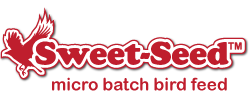Is There Any Proof That Red Dye in Nectar Will Hurt Hummingbirds?

It is no secret that hummingbirds are attracted to the color red. Red flowers are some of their favorite blooms, hummingbird feeders often feature red parts and accents, and these curious birds might investigate anything red, including painted patio furniture, red toys on the lawn, or the jaunty pointed hat of a garden gnome. To take advantage of this red fascination and attract more hummingbirds, some retailers add red dye to nectar powders and concentrates, much to the dismay of conscientious birders. But is there any proof that red dye in nectar will really hurt hummingbirds?
About Red Dye
Different types of red dye used in foods, cosmetics, tattoo inks, and other consumer products are known to cause illnesses, including cancer. In the mid-1970s, Red Dye No. 2, also known as amaranth, was banned because it was strongly linked to cancer in lab rats. Today, different commercial dyes are used to create red coloration, but there is still controversy about their potential side effects. One of the most commonly used dyes, Red Dye No. 40, is banned in some European countries because of potential links to health concerns, but it is still in use in the United States.
Studies Focusing on Red Hummingbird Nectar
While different studies have concluded there are potentially detrimental effects if laboratory animals or humans consume certain red dyes, there have been no scientific projects and no authoritative research on the effect of these same dyes on hummingbirds. Birds have very different metabolisms from typical laboratory mammals and humans, and hummingbirds in particular eat very differently than most other animals. Because hummingbirds rely on nectar for well more than half their diet, any dangerous chemicals or toxic contamination in a popular nectar source could quickly overwhelm these tiny birds.
Wildlife rehabilitators who specialize in hummingbirds have noted that if a hummingbird is fed nectar that includes red dyes, the dye will still be present in the bird’s feces more than 24 hours after that feeding. This indicates the dyes linger in the hummingbird’s body for a long period, which could increase the problems caused by unsafe dyes or chemicals. Additional research and calculations have concluded that if a hummingbird were to eat exclusively nectar treated with red dyes, in one day the bird would consume more than 15 times the recommended amount of the dye compared to what is considered safe for human consumption.
It is believed that overconsumption of red dye in hummingbirds could have potentially disastrous effects, including increased tumors and cancer of the birds’ bills and livers. There is also evidence in laboratory animals that these dyes can impact reproduction and limit breeding success, though there has been no research determining if the same effects would happen to hummingbirds.
While there have been no recognized studies confirming that red dyes are absolutely harmful to hummingbirds, it must also be noted that there have been no studies confirming that these dyes are absolutely safe, either. Furthermore, dyes add no nutritional value to hummingbird nectar, and are not necessary to attract the birds to the food source, since many hummingbird feeders feature red bases, feeding ports, or other decorative accents. Natural flower nectar is clear, and there is no reason to feed hummingbirds any nectar that has been dyed.
Keeping Hummingbird Food Safe
Because red dye is not necessary for hummingbird nectar, many birders prefer to be cautious when feeding these tiny feathered guests. Plain nectar without additional chemicals, colors, or additives is best for the birds, and will be perfectly suitable for their nutritional needs. While the case is often made that the red color attracts birds and helps them find the nectar, the red already on hummingbird feeders is just as effective without any risk of problems. If desired, birders can easily add additional bursts of red to their yard with red flowers or flowerpots, a gazing ball, painting the outside of the hummingbird feeder, or even adding accents such as ribbons or holiday ornaments near the feeding area.
There may be no proof that red dye in nectar will hurt hummingbirds, but since it isn’t necessary anyway, why take the chance?
Image by Brigitte makes custom works from your photos, thanks a lot from Pixabay
